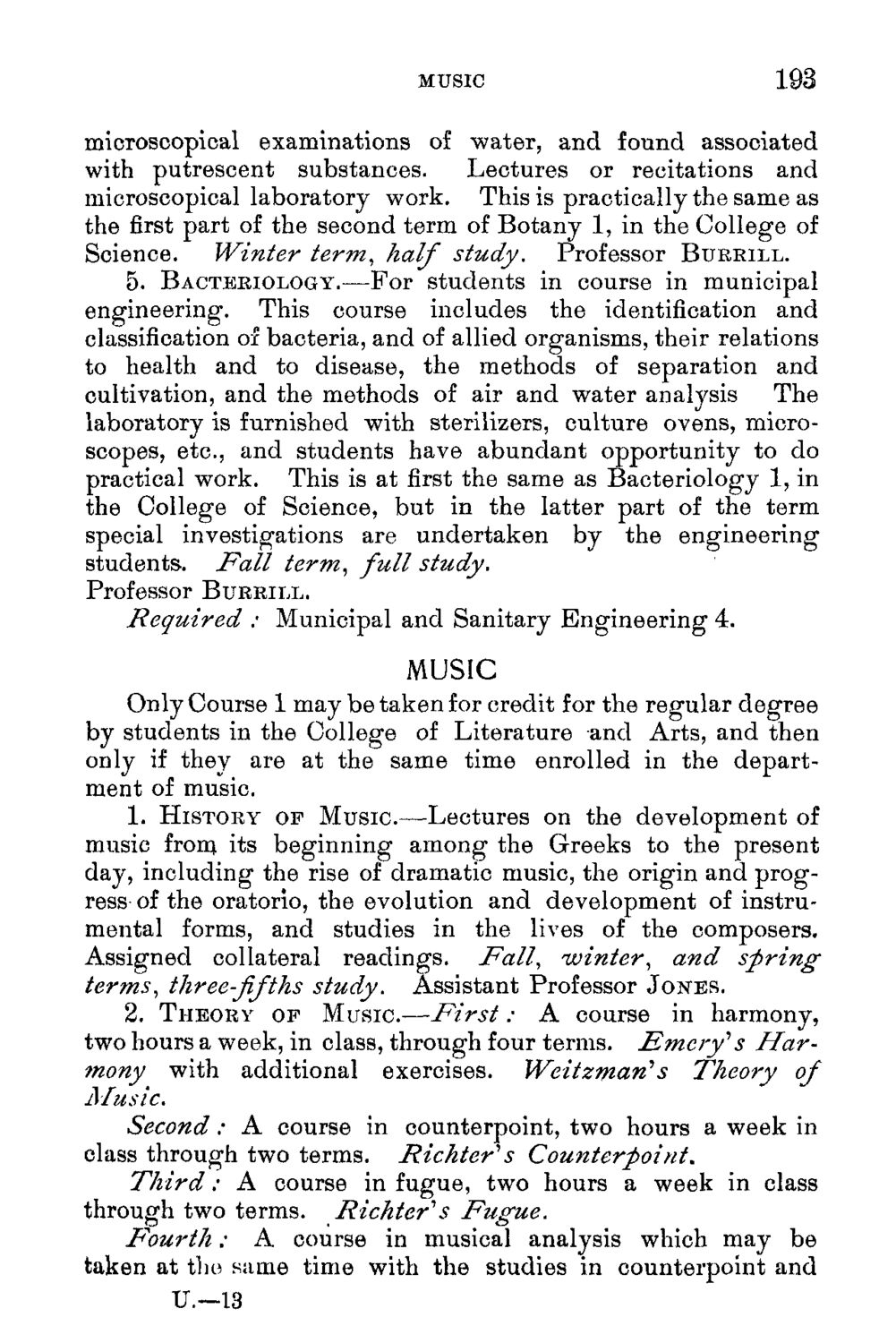| |
| |
Caption: Course Catalog - 1895-1896
This is a reduced-resolution page image for fast online browsing.

EXTRACTED TEXT FROM PAGE:
MUSIC 193 microscopical examinations of water, and found associated with putreseent substances. Lectures or recitations and microscopical laboratory work. This is practically the same as the first part of the second term of Botany 1, in the College of Science. Winter term, half study. Professor BUREILL. 5. BACTERIOLOGY.—For students in course in municipal engineering. This course includes the identification and classification of bacteria, and of allied organisms, their relations to health and to disease, the methods of separation and cultivation, and the methods of air and water analysis The laboratory is furnished with sterilizers, culture ovens, microscopes, etc., and students have abundant opportunity to do practical work. This is at first the same as Bacteriology 1, in the College of Science, but in the latter part of the term special investigations are undertaken by the engineering students. Fall term, full study. Professor BUREILL. Required : Municipal and Sanitary Engineering 4. MUSIC Only Course 1 may be taken for credit for the regular degree by students in the College of Literature and Arts, and then only if they are at the same time enrolled in the department of music. 1. HISTORY OP MUSIC.—Lectures on the development of music from its beginning among the Greeks to the present day, including the rise of dramatic music, the origin and progress of the oratorio, the evolution and development of instrumental forms, and studies in the lives of the composers. Assigned collateral readings. Fall, -winter, and spring terms, three-fifths study. Assistant Professor JONES. 2. THEORY OP MUSIC.—First: A course in harmony, two hours a week, in class, through four terms. Emery''s Harmony with additional exercises. Wcitzmari's Theory of Music. Second : A course in counterpoint, two hours a week in class through two terms. Richter's Counterpoint. Third: A course in fugue, two hours a week in class through two terms. Richter's Fugue. Fourth: A course in musical analysis which may be taken at tho same time with the studies in counterpoint and U.—13
| |